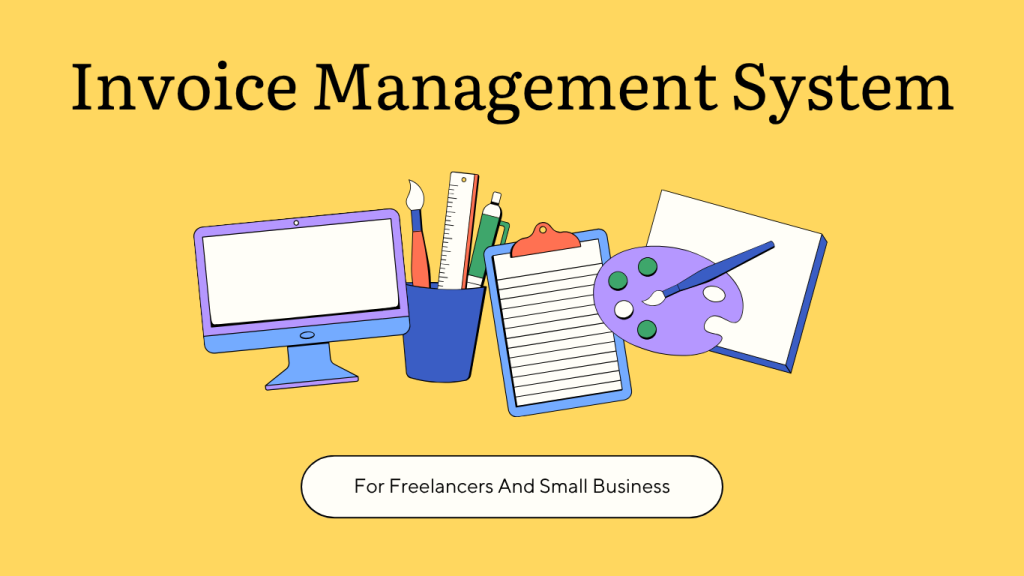The Ultimate Guide to Invoice Management System: Streamline Your Business Finances
In today’s fast-paced business world, managing invoices efficiently is crucial for financial health. An Invoice Management System (IMS) automates the creation, tracking, and processing of invoices, making it easier for businesses to maintain accurate records, reduce errors, and accelerate cash flow.
This comprehensive guide explores everything you need to know about IMS, its benefits, features, types, and how to choose the right solution for your business.
What is an Invoice Management System?
An Invoice Management System is software designed to automate and streamline invoicing. Traditional methods, like spreadsheets or paper-based invoices, are prone to errors and inefficiency.
Key features of an IMS include:
-
Automated invoice generation
-
Approval workflows
-
Integration with accounting software
-
Real-time tracking of payments
-
Reporting and analytics
By digitizing the invoice process, businesses can ensure accuracy, reduce administrative costs, and improve overall efficiency.
Why Businesses Need an Invoice Management System
Manual invoice processing is time-consuming and risky. Errors can lead to delayed payments, disputes, and cash flow problems. Here’s why businesses adopt IMS:
1. Error Reduction
Automated calculations and validations reduce human errors like duplicate entries or incorrect billing.
2. Faster Payments
Automated reminders and easy invoice submission accelerate payment cycles, improving cash flow.
3. Improved Compliance
IMS ensures adherence to taxation and financial regulations with accurate records and audit trails.
4. Better Vendor Relationships
Accurate and timely payments strengthen supplier relationships and trust.
5. Enhanced Reporting
Detailed analytics on outstanding invoices and payment trends enable better financial decisions.
Key Features of an Effective Invoice Management System
When choosing an IMS, look for these essential features:
Invoice Creation and Customization
Easily create professional invoices with customizable templates including logos, payment terms, and company branding.
Automated Workflows
Automate approval processes to reduce bottlenecks and ensure efficiency.
Multi-Currency and Tax Support
Support for international transactions, multiple currencies, and tax calculations is crucial for global businesses.
Integration with Accounting Software
Seamlessly sync with tools like QuickBooks, Xero, or SAP for accurate financial tracking.
Mobile Access
Manage invoices on-the-go with mobile-friendly platforms.
Security and Compliance
Ensure encryption, role-based access, and adherence to financial regulations.
Types of Invoice Management Systems
Businesses can choose from various IMS types:
1. Cloud-Based Invoice Management
Cloud IMS offers flexibility, remote access, automatic updates, and lower upfront costs. Examples: InvoiceFlexi, Skynova, Zoho Invoice.
2. On-Premise Invoice Management
Installed locally on company servers, offering full data control but requiring higher maintenance.
3. Hybrid Systems
Combine cloud flexibility with on-premise control for sensitive data.
Benefits of Using an Invoice Management System
1. Increased Efficiency
Automation reduces manual workload, freeing up staff for strategic tasks.
2. Cost Savings
Minimize errors and processing time, avoiding late payment penalties.
3. Enhanced Accuracy
Automated validations improve accuracy and reduce disputes.
4. Scalability
Handles increasing invoice volumes as the business grows.
5. Better Financial Control
Real-time reports and analytics give insight into cash flow and overall financial health.
How to Choose the Right Invoice Management System
1. Assess Business Needs
Determine invoicing volume, complexity, and industry-specific requirements.
2. Consider Integration
Ensure compatibility with ERP, CRM, and accounting software.
3. Evaluate User-Friendliness
An intuitive interface reduces errors and training time.
4. Check for Automation
Features like recurring invoices and approval workflows save time.
5. Review Security Measures
Look for encryption, access controls, and regulatory compliance.
6. Read Reviews and Case Studies
Learn from other businesses’ experiences.
Common Challenges in Invoice Management
-
Resistance to Change: Staff may be hesitant; proper training is key.
-
Integration Issues: New software must work seamlessly with existing systems.
-
Data Security Concerns: Ensure robust security protocols.
-
Maintaining Accuracy: Periodic audits help maintain data integrity.
Future of Invoice Management Systems
Emerging technologies are shaping IMS:
-
Artificial Intelligence (AI): Detect errors, predict delays, automate workflows.
-
Blockchain: Secure, transparent, tamper-proof invoicing.
-
Mobile-First Solutions: Manage invoices from anywhere.
-
Digital Wallet Integration: Faster payments with PayPal, Stripe, UPI.
Why InvoiceFlexi Stands Out

InvoiceFlexi is an all-in-one IMS solution for small and medium businesses. Benefits include:
-
Easy invoice creation
-
Automated workflows for approvals and reminders
-
Integration with accounting tools
-
Cloud-based access
-
Secure storage of financial data
Users report faster payment cycles, fewer errors, and better financial management.
Tips for Maximizing Invoice Management Efficiency
-
Standardize invoice templates.
-
Automate recurring invoices.
-
Set up alerts for approvals and payments.
-
Use analytics to track outstanding invoices.
-
Train staff for smooth adoption.
Conclusion
An Invoice Management System is essential for businesses to streamline operations, reduce errors, and improve cash flow. Automation and digital solutions like InvoiceFlexi empower businesses to make smarter financial decisions, maintain strong vendor relationships, and optimize efficiency.
Invest in the right IMS today to enhance productivity, transparency, and financial control.
Run your own invoice management system